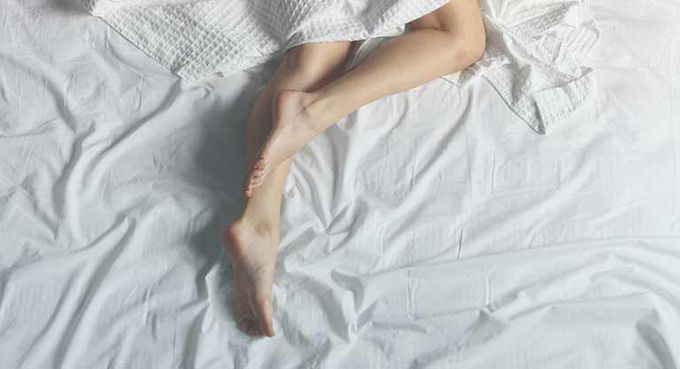


Restless Legs Syndrome(RLS)
Hi there, in the previous article I’ve talked about Nocturnal Leg Cramps. I also told you that, Nocturnal Leg Cramps and Restless Legs Syndrome are not the same things. Here I’m going to introduce you to the Restless legs Syndrome (RLS) and the difference between them. Let’s begin: RLS is also known as Willis-Ekbom diseases (WED) because it was first described by Sir Thomas Willis. What is Restless Legs Syndrome (RLS)? RLS/WED is a common condition of the nervous system that causes an overwhelming, uncontrollable urge to move your legs. It can more rarely affect the other parts including the arms, head, torso and so on. You feel an uncomfortable sensation in your legs. Some people describe it as a ‘creeping’, ‘pins and needles’, ‘crawling’, ‘tingling ‘or ‘burning’ sensation. It happens when you are sitting or lying down in the evening and nighttime hours. People with RLS always often keep their legs in motion to minimize or prevent the sensation. But not for long, as soon as the movement is stopped, the unpleasant sensation starts again! Who can get RLS? You may have RLS after the age of 45. If you have a family member with restless legs syndrome, you are more likely to develop the symptoms before you are 45 years old. It occurs in both men and women, although women are more likely to have it than men. Women are twice as likely as men to have RLS. For women who already have RLS, it usually gets worse during pregnancy. It may begin at any age. Many individuals who are severely affected are middle-aged or older. Is RLS a sleep disorder? Yes, RLS is a most common neurological sleep disorder. It makes difficult to get comfortable enough to fall asleep. The symptoms are usually worse at night during your sleep time. If you have RLS, you cannot sleep properly. Many people with severe cases get less than five hours of sleep each night and maybe the sleep is poor quality. For this reason of sleepless condition from RLS can make you excessively sleepy during the daytime, cause you to be irritable and make concentration difficult in your daily works. This may have a major impact on your professional and personal life. RLS frequency leads to Insomnia. People with restless legs syndrome are more likely to have depression or anxiety. According to the Restless Legs Syndrome Foundation, approximately 40% of people with RLS complain of symptoms that. Are Restless Legs Syndrome (RLS) and Periodic Limb Movement Disorder (PLMD) the same? RLS and PLMD are distinct disorders. At first, glance, appear to be the same but REMEMBER that RLS should not be confused with PLMD. What causes of RLS? RLS is idiopathic, that means the exact cause is unknown but potential causes of RLS including: 1. Iron deficiency, also called sideropenia, hypoferremia (an abnormal deficiency of iron in the blood). It is very important for the development of RLS. 2. Pregnancy {pregnant women, especially during the third trimester. Symptoms of this syndrome usually resolve a month after delivery}; 3. Genetics {For this reason, RLS may run in families}; 4. Use of alcohol and caffeine; 5. Parkinson’s diseases (PD) {a disorder of a central nervous system. The medical journal of the American Academy of Neurology, suggests that people with Parkinson’s suffer higher-than-average rates of RLS}; 6. Diabetes {abnormally high levels of sugar (glucose) in the blood}; 7. Varicose vein {swollen and enlarged veins that usually occur on the legs and feet}; 8. Rheumatoid arthritis(RA) { a long-term autoimmune disorder that primarily affects joints}; 9. Kidney disease or kidney failure {Chronic kidney disease also called chronic kidney failure, that means gradual loss of kidney function}; 10. Peripheral neuropathy {a result in damage to peripheral nerves} ; 11. Some drugs that may cause this syndrome, Including antinausea drugs, antipsychotic drugs, antidepressants and some cold and some cold and allergy medications……And so on. What is the difference between Nocturnal Leg Crumps (NLC) and RLS? Leg cramps at night different from RLS. Including: I. RLS causes a desire to move the legs while NLC causes prevent to move the leg; II. During RLS, when you move your legs, you feel the symptoms gone and when you stop the moving, the symptoms again come! On the other hand, During NLC you cannot able to move your leg; III. RLS does not cause so much pain and cramping in muscles but NLC does. What is the diagnosis and treatment of RLS? Firstly, when you feel some symptoms of RLS, you should go to see a doctor as early as possible. Many people wait years to seek treatment because they do not view it as a serious concern. If it left untreated, you may notice that your symptoms become more frequent and severe. When you go to the doctor, your doctor may give you some tests like check the iron (ferritin) level, Ask you to stay overnight in a sleep study lab to determine other causes of your sleep disruption and some other tests if needed. After diagnosis, your doctor prescribes you some medications for you. How do you get rid of RLS? a) Avoid alcohol and caffeine; b) Regular exercise may relieve symptoms of RLS; c) Apply warm and cool packs; d) Try warm baths and massaging your legs; e) Eat healthy foods. Especially that contains iron, Including beef organs like liver, kidney, brain, heart; Red meat, fish, spinach, pumpkin seeds etc. Finally, THANK YOU for taking the time to read my article. Bye for now! WRITTEN BY: AQIB NEAZ ZOHA Jinzhou Medical University (CHINA) References: **WEB LINK: www.Webmd.com www.mayoclinic.com www.rls.org www.nhs.org www.medicinenewstoday.com www.medicinenet.com www.sleepeducation.org and so on **Youtube: PharmacyTrust.com DW English Healthguru And also National Sleep Foundation Restless Legs Syndrome Foundation American Academy of Neurology Wikipedia
I’ve been living with Parkinson’s disease for quite some time, and for years, I struggled to find lasting relief. While medications offered some temporary help, the symptoms always returned and often worsened.Out of a mix of hope and hesitation, I decided to try an herbal treatment program from NaturePath Herbal Clinic. I’ll admit, I was skeptical at first. But around the fourth month, I began to notice real, steady progress.my tremors became less frequent the stiffness in my body eased My balance and coordination gradually improved It wasn’t an overnight transformation, but it was consistent and life changing. For the first time in years, I feel more in control of my body. I can move with greater freedom, sleep more peacefully, and enjoy daily activities without the constant discomfort I once accepted as normal.The improvement I’ve experienced physically, emotionally, and mentally has been nothing short of upliftings.If you're exploring natural options for managing Parkinson’s, I wholeheartedly recommend looking into NaturePath Herbal Clinic. Their approach has made a real difference in my life, and I’m truly grateful I gave it a chance. www.naturepathherbalclinic.com info@naturepathherbalclinic.com
Symptoms of HyperekplexiaAutoimmune diseases


